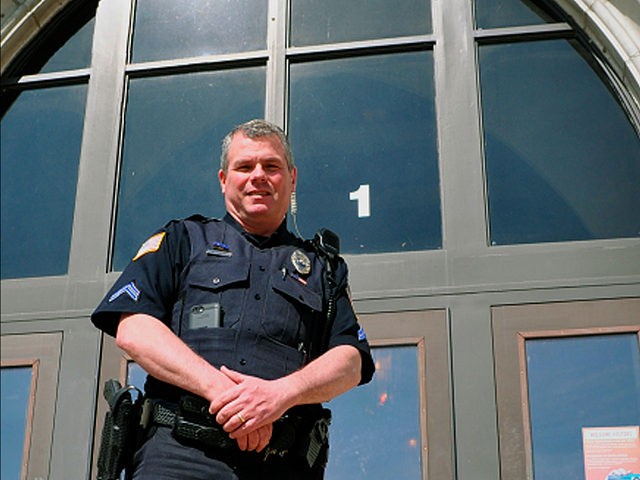Every multiple murder committed by an individual with a firearm at a school is followed immediately by a heated debate about why and how such a tragedy occurred and what steps can be taken to prevent, or at least minimize, the chance for a recurrence.
This is an understandable and healthy debate in which we should engage; healthy, that is, unless the debate is structured as a simplistic, zero sum game in which a single factor is declared the cause of the tragedy – usually the lack of sufficient gun control – or a single solution proposed to solve it – often, arming teachers or having more police officers at schools.
Those who understand policing and law enforcement more than do pundits spouting the simplistic mantra of a single cause or “magic bullet” solution, however, know better. Unravelling the tragedy of mass shootings necessitates far more focused and deliberate study and resources than the vast majority of politicians and opinion makers are willing to afford it. This clearly is the case when considering the policy of placing police officers (generally known as “School Resource Officers” or SROs) in our schools as a means of preventing and defending against violent attacks.
In the most recent school mass shootings – this past February at a high school in Parkland, Florida and earlier this month at one in Santa Fe, Texas – the lack of an armed, uniformed law enforcement officer in the schools was not an issue. Both high schools had uniformed officers on their campuses. Yet, an armed attacker was able to gain access to each school and murder multiple individuals.
While there are many schools across the country that do not have full-time, armed, and uniformed law enforcement officers on campus every school day, as a result of the push in recent years to increase the number of schools with full-time SROs (especially since the Newtown, CT mass shooting in 2012), we quickly are approaching the point at which most schools across the country do have such officers. But this is merely the starting point for determining whether, when, and how to utilize such human and fiscal resources.
Any reasoned consideration of the value of having law enforcement officers at schools must begin with accepting two fundamental premises. First, that placing a law enforcement officer at a school does not – and cannot – guarantee that a shooter will never be able to successfully carry out their evil design. The second fundamental premise must be that such a decision can be one part of a multi-pronged effort to address the question of how to best protect children at schools.
Notwithstanding that SROs have saved lives in a number of schools (in Maryland just two months ago, for example), some extreme civil liberties advocates, and a few die-hard libertarians reject outright the benefit of having armed law enforcement officers at schools; fearing such individuals will themselves engage in racist or violent behavior. Those outliers aside, the vast majority of voters, and an increasing number of elected officials at all levels of government, tend to agree that having such professionals at schools is a wise and reasonable defense.
Unfortunately, this public policy position has not yet matured to the point that policy makers from the U.S. Department of Justice on down to local school board members, truly understand the complexities involved in implementing such programs. Most local school districts and municipal governing bodies have become locked into patchwork systems of establishing, funding, training, and coordinating School Resource Officers in ways that significantly diminish the effectiveness of the programs.
For example, just in the Atlanta metropolitan area where I live, various (and adjoining) localities administer their school safety programs in completely different ways. In some, it is the school board and not the local police or sheriff department that controls all aspects of their SRO program. In others, it is the sheriff’s office that oversees the program. In every one, however – and this is consistent across all jurisdictions from the east coast to the west – funding comes from multiple sources (federal, state and local), with diverse accounting, program longevity, and other mandates that can make long-term, consistent planning and coordination difficult if not impossible.
Problematic also is the perception in some jurisdictions that SROs are not full-fledged police officers, and the postings viewed as second-tier assignments.
Add to this patchwork scenario the problem of differing definitions and job descriptions for what SROs are supposed to do, legally and policy-wise, and it is little wonder that in at least one jurisdiction – Parkland Florida on Valentine’s Day 2018 – the consequences of confused training and coordination arguably worsened an already tragic situation.
The professional organization focusing specifically on this problem – the National Association of School Resource Officers (NASRO) – has developed a number of worthwhile guidelines and programs for improving the effectiveness of law enforcement officers in America’s schools. Congress and the federal Justice Department have contributed money and guidelines as well. However, until state and local jurisdictions greatly improve their ability and willingness to treat these programs in a far more coordinated and strategic manner than currently, their effectiveness will continue to fall short of their potential.
Bob Barr is president and CEO of the Law Enforcement Education Foundation (LEEF). From 1995-2003, he represented Georgia’s Seventh Congressional District in the U.S. House of Representatives.

COMMENTS
Please let us know if you're having issues with commenting.